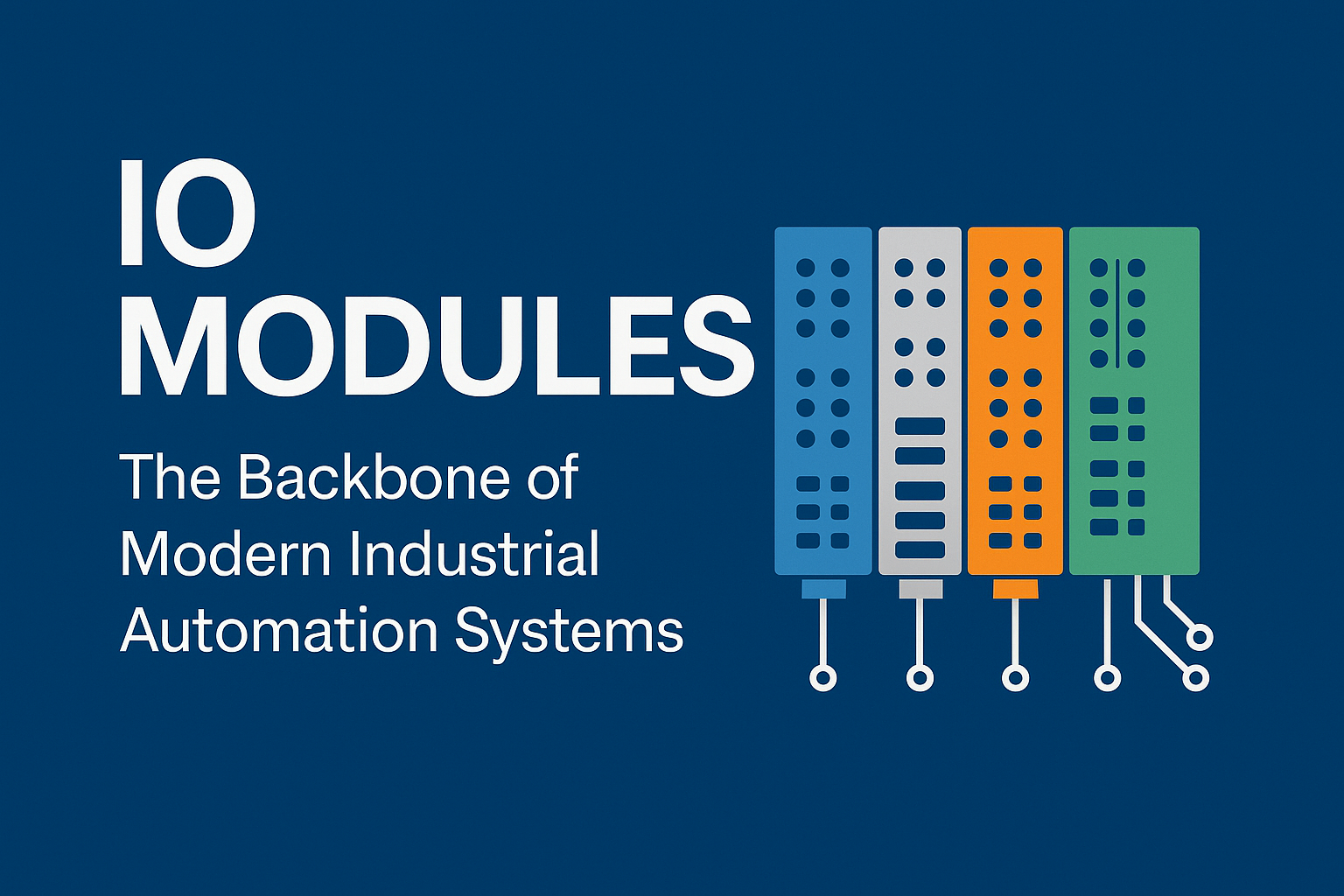IO Modules -The Backbone of Modern Industrial Automation Systems

In industrial automation, IO Modules act as the essential bridge between field devices like sensors and actuators and the programmable logic controllers (PLCs) that orchestrate complex processes. Whether you’re managing a conveyor system in a factory or balancing water levels at a treatment plant, IO modules help ensure accurate data collection, processing, and output commands, making them vital for smooth and efficient operations.
This article’ll dive into what IO modules do, explore their different types, discuss their features and advantages, and explain how they impact modern industries.
What Are IO Modules?
At their core, IO Modules (Input/Output modules) are hardware devices that receive analogue or digital signals from field instruments and devices, then pass that data on to a central control unit. They also take control signals from the PLC or distributed control system and output them to machines or actuators. The primary role of these modules is to enable communication between the control system and the physical world.
Types of IO Modules
IO modules come in a variety of forms, designed for different signal types and automation requirements:
Digital Input/Output Modules
These modules process binary signals (ON/OFF). Examples include pushbuttons, proximity sensors, indicator lights, and relay contacts. Digital IO modules help control pumps, solenoids, and other devices where simple states matter.
Analogue Input/Output Modules
Unlike digital signals, analogue IO modules deal with continuously variable signals, such as 4-20mA current loops or 0-10V voltages. Sensors like pressure transducers, temperature transmitters, and flow meters often use analogue IO to transfer accurate process data.
Speciality IO ModulesSpeciality:
- Temperature input modules for thermocouples and RTDs.
- High-speed counter modules for accurate tracking of high-speed production processes.
- Safety IO modules are built for SIL-rated safety functions.
- Motion control IO modules that interface with drives and servos.
Distributed IO Modules
Distributed IO modules extend automation networks into the field. Installed closer to the machines or processes they control, they reduce long cable runs back to a central control cabinet, improving signal integrity and lowering installation costs.
Key Features of Modern IO Modules
Modern IO modules come equipped with several advanced features that streamline engineering and operations:
- Modularity: Plug-and-play design for easy replacement or capacity expansion.
- Onboard Diagnostics: Automatic fault detection and real-time status monitoring at the channel level.
- Network Compatibility: Support standard industrial protocols like PROFINET, EtherNet/IP, Modbus TCP/IP, and more.
- High-speed Communication: Rapid data exchange rates for precise control in dynamic environments.
- Robust Design: Wide temperature ranges, vibration-resistant housings, and ingress protection ratings make them suitable for harsh environments.
- Hot-Swappability: Replace faulty modules without powering down the entire system.
Benefits of IO Modules in Industrial Automation
Implementing IO modules strategically can significantly improve system design, engineering, and daily operation. Here are some of the most important benefits:
Scalability
With IO modules, it’s easy to scale up as your system grows. Adding new sensors, drives, or machines usually requires only plugging in and configuring a new IO module — no complex rewiring or engineering.
Space and Wiring Reduction
Distributed IO modules simplify cabling and eliminate the need for large control cabinets. The result is a more streamlined installation that improves safety and maintenance ease.
Greater Reliability
Diagnostics and predictive maintenance features catch faults early. This means less unexpected downtime and faster repairs when issues do occur.
Increased Accuracy and Efficiency
IO modules help reduce electrical noise and signal loss by digitising inputs and outputs at the source. This leads to more accurate readings and finer control of your processes.
Applications of IO Modules
IO modules are fundamental across industries. Some common use cases include:
- Manufacturing: Interfacing with automated machines, robotic arms, and assembly lines.
- Building Automation: Monitoring HVAC, lighting, access control, and energy management systems.
- Oil & Gas: Providing robust monitoring of pumps, valves, and safety instrumentation.
- Pharmaceuticals: Ensuring strict process control for batch reactors and cleanrooms.
- Utilities and Water Treatment: Processing signals from water level sensors, chemical pumps, and flow meters.
How to Select the Right IO Module
When choosing an IO module for your application, it’s important to look at:
- Channel Density: Do you need 8 channels, 16 channels, or more per module?
- Signal Types: Ensure the module matches your devices’ input/output signal types.
- Communication Interface: Check compatibility with your control network — PROFINET, EtherNet/IP, Modbus, etc.
- Environmental Ratings: Verify temperature, ingress protection (IP), and hazardous-area certifications.
- Scalability Needs: Pick a platform that can grow with your project.
Future of IO Modules in Automation
As industrial networks grow smarter and more distributed, IO modules will continue to evolve. Trends like Industry 4.0, edge computing, and IIoT (Industrial Internet of Things) will drive the development of IO modules that can do even more processing at the edge, reducing the burden on central controllers and improving response time.
With wireless IO modules becoming more common and predictive maintenance becoming a norm, these components will remain at the heart of automation architecture for years.
Conclusion
In short, IO Modules form the backbone of virtually every automation setup, enabling high-precision input and output control across diverse industries. Their flexibility, diagnostic capability, and scalability make them invaluable for any engineer optimising their process control systems.




